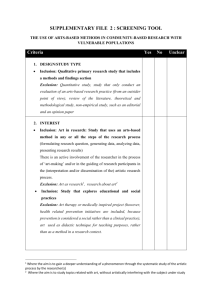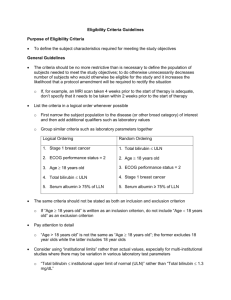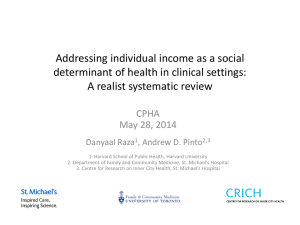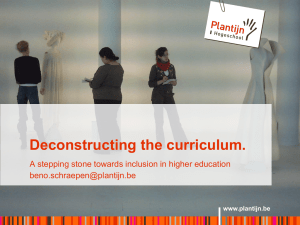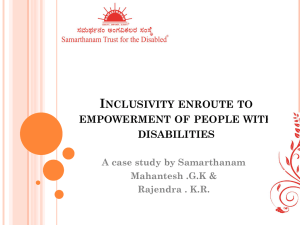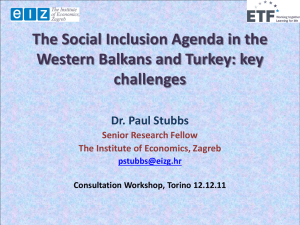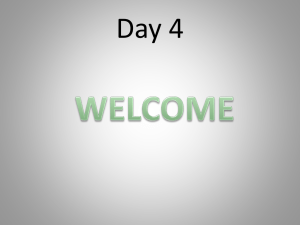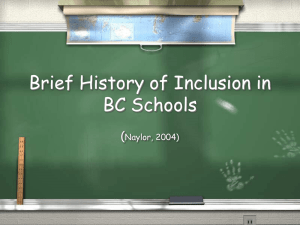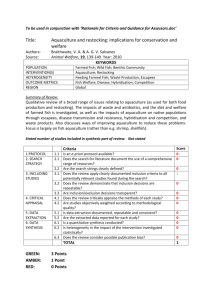A Framework for Social Inclusion
advertisement
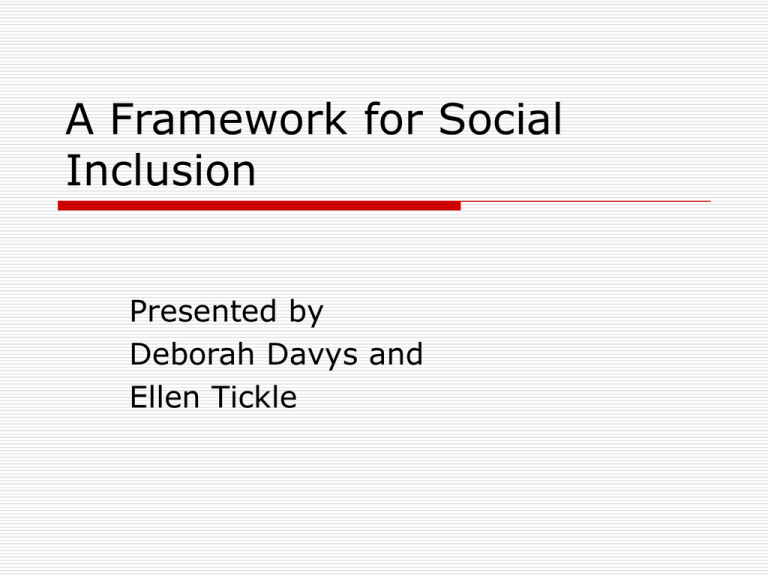
A Framework for Social Inclusion Presented by Deborah Davys and Ellen Tickle Learning outcomes Clarify what constitutes socially valued within our society and why some people are at risk of social exclusion – Social role valorisation (Wolfensberger) Assess current service provision against the framework of the five service accomplishments (O’Brien and Tyne) Develop an action plan to enhance social inclusion within individual services Outline of session What is meant by social inclusion What is the five point framework, review of the services the group participants work within and application of framework What can be done to support social inclusion at micro and macro level Social exclusion Social exclusion happens when people or places suffer from a series of problems such as unemployment, discrimination, poor skills, low incomes, poor housing, high crime, ill health and family breakdown. When such problems combine they can create a vicious cycle. Social exclusion can happen as a result of problems that face one person in their life. But it can also start from birth. Being born into poverty or to parents with low skills still has a major influence on future life chances. (http://www.socialexclusion.gov.uk) What is social inclusion? Concept need to be defined in terms of what social exclusion is Societal expectations which include: - behaviour - values - money - education - habits/roles/routines - possessions Social inclusion Is concerned with the promotion of full participation in all aspects of community life, and especially those who are currently, or at risk of, marginalisation Citizenship is significantly linked with social inclusion and incorporates issues of status, rights and duties Consider… Physical integration Social integration Need for physical integration to develop social integration Link between social integration and social inclusion Five service accomplishments Community presence Choice Competence Respect Community participation (O’Brien and Tyne) Exercise Consider your service in the light of this framework – is the service supporting social inclusion on all counts? If your answer is yes, how is the service supporting inclusion? If your answer is no, what are the areas that are discouraging social inclusion? Using the framework, can you devise an action plan for you / your service that will support service users towards social inclusion? Feedback Other changes required: Empowerment – service users seeing themselves as having skills and abilities and becoming active participants in user groups and developing policies and procedures People having valued social roles Being able to access local services that facilitate inclusion and independence National policy and legislation Education of society at large Inter agency cooperation and collaboration References Atherton,A. (2003) A History of Learning Disabilities in Gates,B.(Ed) Learning Disabilities, Toward Inclusion. London: Churchill Livingstone, pp41-61. O’Brien, J. and Tyne, A. (1981) The principle of normalisation: A foundation for effective services. London: CMH Social Exclusion Unit http://www.socialexclusion.gov.uk
